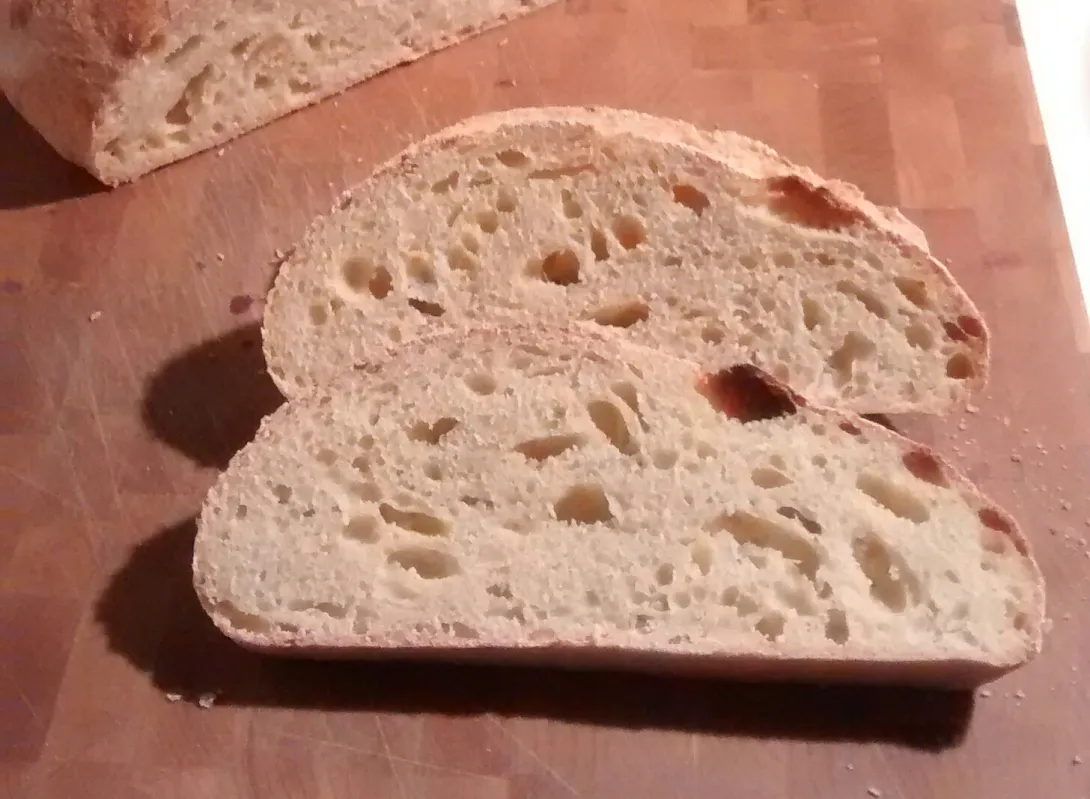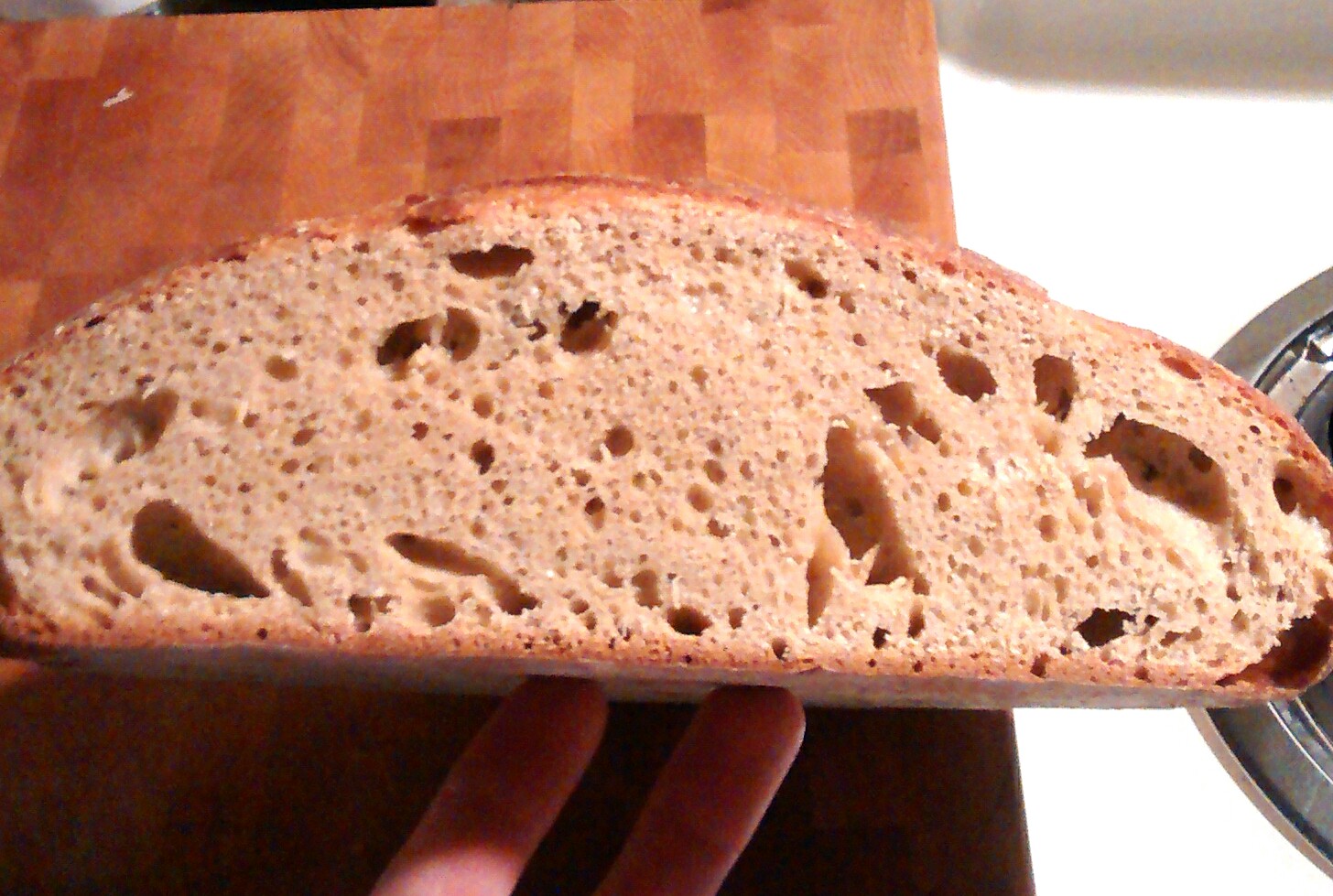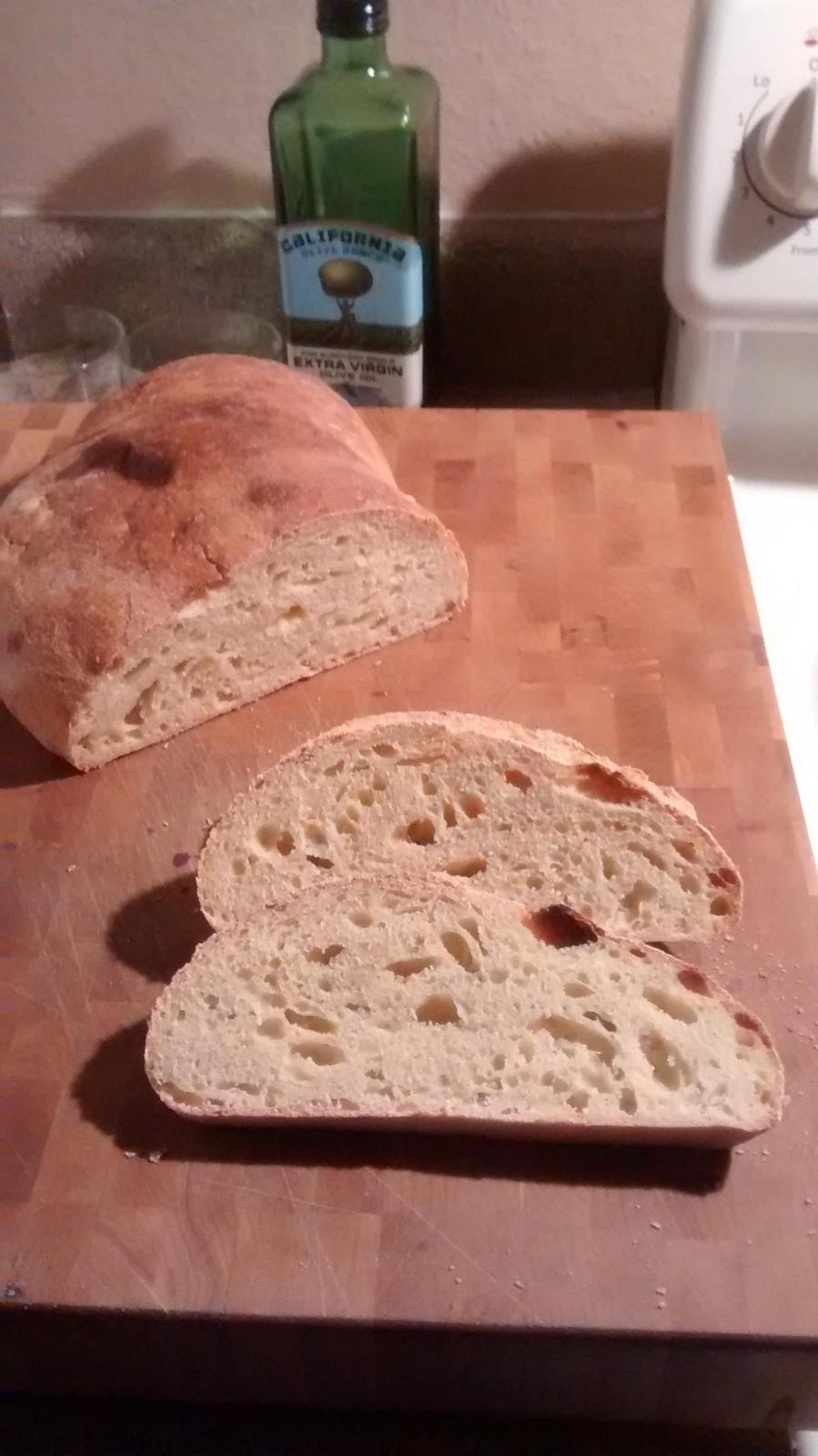
I've made a variety of breads in the last few weeks. First of are a couple types of whole wheat bread.

This one is a 100% whole wheat bread at about 90% hydration. The bread had a nice whole wheat flavor with minimal sourness. The crumb felt dense but was not dry. I would have liked more flavor contribution from the starter.

Next is a whole wheat ciabatta at about 95% hydration. The crumb was nice and open, but the bread was still chewy from all the whole grain bran. I noticed that all the bubbles were larger toward the outside of the loaf. My guess is that the gluten development was weakened from the whole grain flour, so the outer bubbles expanded outward rather than raising the loaf evenly. The next time I make a loaf like this I will probably use 25% high gluten bread flour so that the loaf holds the bubbles all the way to the center.

Third, I have a couple of 50/50 rye and wheat loaves. They are made from the same dough, but they were baked on different stones at different levels in my oven. The better-looking loaf on the left also had a more open and tender interior. It was interesting to see the effect different placements of the loaves within the oven can have on the final outcome.

Lastly, I baked the Altamura loaf from Leader's Local Breads. It is made with 100% semolina flour and has a unique crescent shape. It had an interesting flavor and golden color, but my loaf didn't expand open like the book explained it would.
My next breads will be experiments on low or no salt doughs, like in a Tuscan bread. I am interested in seeing how the removal of salt will affect the flavor, tenderness, fermentation, and keeping qualities of various loaves.
- George_AZ's Blog
- Log in or register to post comments
the flavor from the whole grains to some degree can overpower the sour. Even though the whole grain bread may have much more acid, both acetic and lactic, you don't taste it like you do in a white bread that has much less acid in it. For these kinds of breads you can sift out the bran from the whole flour and soak it in 155 F water. Use this to make the levain from a small amount of starter. Also make sure to autolyze the rest of the flour with 155 F water as well. This will bring even more acid to the party and make you whole grain breads as sour as you want.
The breads all look pretty nice to me. You can't expect whole grain bread crumb to be like white breads.
Happy whole grain SD baking
Interesting-- I've never made the levain using just the bran. It seems this would help tenderize the bran and bring out it's flavor. Also, I usually do the autolyse with room temperature water. I'll see how using warmer water changes the end result. Another option would be using a rye starter for its sourness, but that would probably lessen the oven spring from reduced gluten.
I'll continue experimenting to figure out how to make an all, or mostly, whole grain bread that has the sourness and texture I'm looking for.
The most sour starter I ever made was WW as was the levain and bread made from it. You are only using 10 g of starter to make the levain so the oven spring is not affected at all by the bran which is tiny.